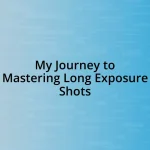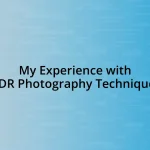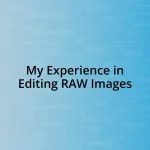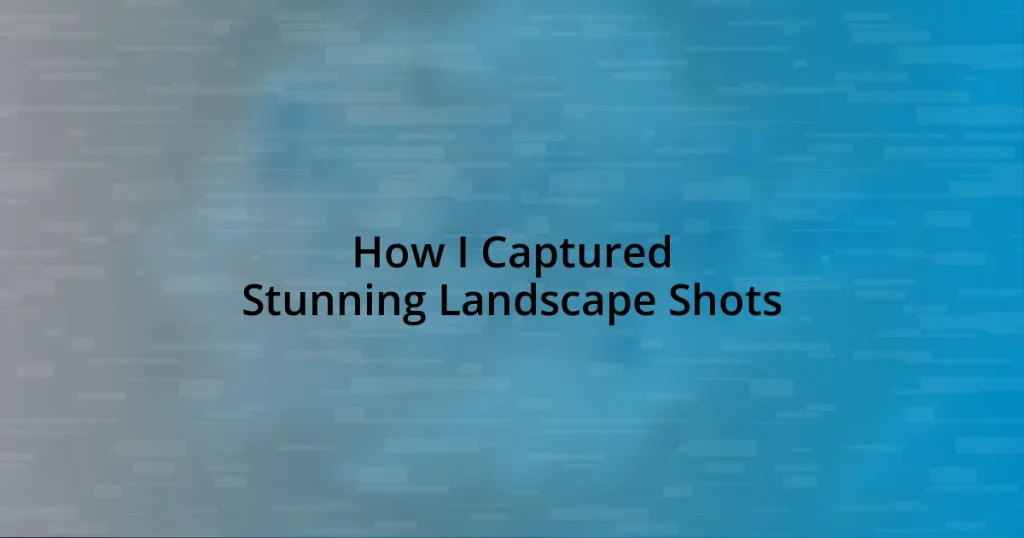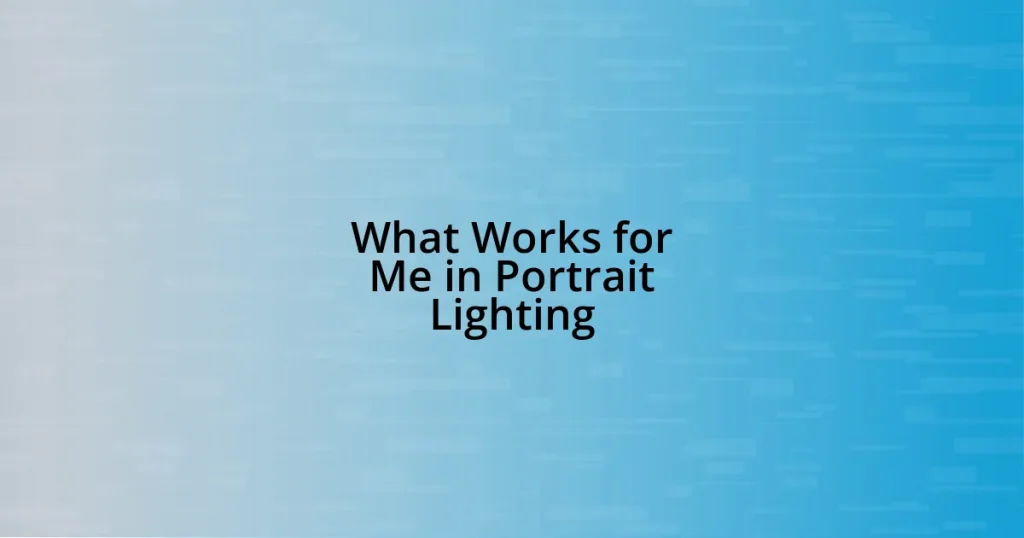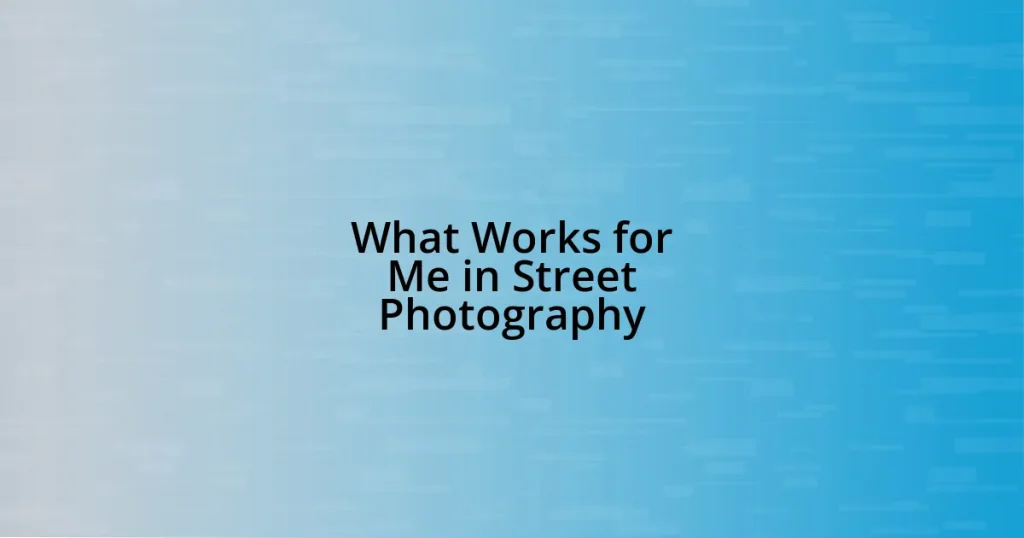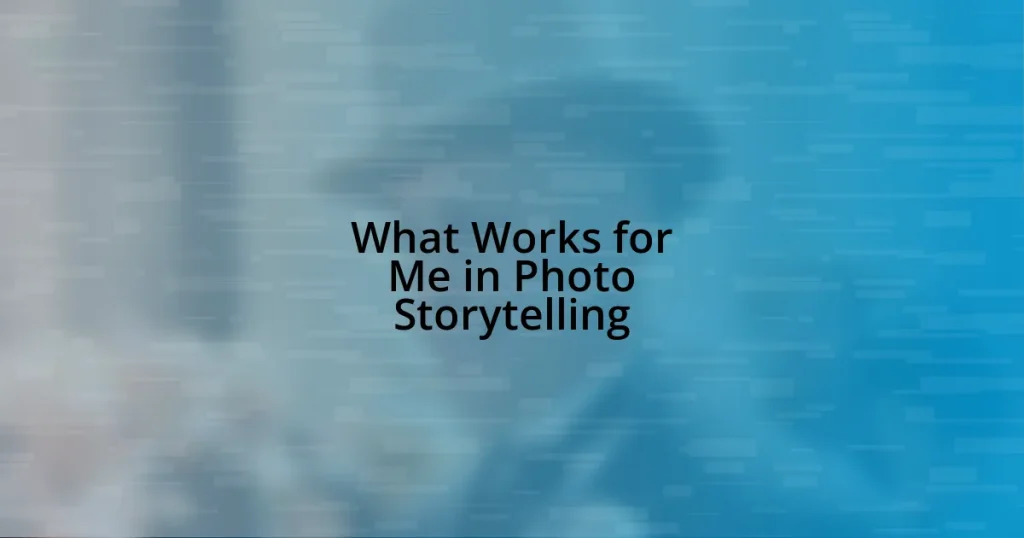Key takeaways:
- The golden hour is crucial for capturing magical light in landscape photography.
- Stability from using a sturdy tripod and selecting the right camera gear can significantly improve image quality.
- Composition techniques, such as leading lines and the rule of thirds, play a vital role in storytelling through images.
- Editing photos enhances their impact, emphasizing the importance of color correction and composition adjustments.
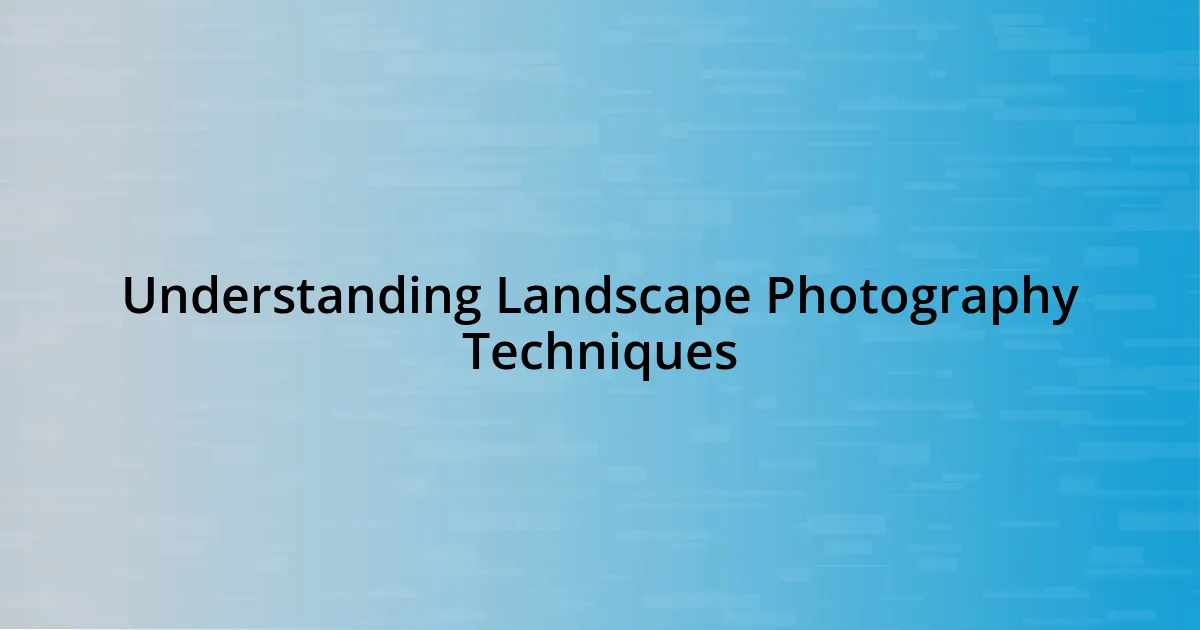
Understanding Landscape Photography Techniques
When I first ventured into landscape photography, I found myself captivated by the play of light and shadows. The golden hour, just after sunrise or before sunset, offers the most magical light. Have you ever stood on a hilltop, watching the sun dip below the horizon, and felt that rush? It’s in those moments that you realize how vital timing is—something I wish I had grasped sooner.
Using a sturdy tripod has been a game changer for me. I remember a time when I attempted to capture a serene lake at dawn, but my shaky hands resulted in blurry images. I learned the hard way that stability allows for longer exposures, which are essential for capturing the soft, dreamy water reflections. Honestly, it’s amazing how a simple tool can elevate your work so dramatically, don’t you think?
Composition is another crucial aspect that I constantly explore. The rule of thirds is a great starting point, but sometimes it’s the unexpected angles that yield the most stunning results. I recall an outing where I aimed my camera from the ground, low to a field of wildflowers, framing a majestic mountain in the distance. That shot wasn’t just a picture; it was a feeling, an encapsulation of the vastness around me. How do you approach your composition?

Choosing the Right Camera Gear
Choosing the right camera gear is essential for capturing stunning landscapes. I’ve experienced firsthand how the choice between a full-frame camera and a crop sensor can change the outcome of a shot. The full-frame cameras often capture more light, offering better quality in low-light situations — and trust me, those sunrise and sunset moments are when you’ll appreciate this difference the most.
Lenses play a crucial role as well. I invested in a wide-angle lens after realizing how it enhances the depth of a scene. During one of my trips to the Grand Canyon, the expansive landscape seemed to transform when I switched to a 16-35mm lens, allowing me to capture both the vastness of the canyon and the vibrant sky above. Have you had a similar experience when trying out a new lens? It’s like discovering a whole new perspective.
Lastly, don’t overlook accessories. A sturdy tripod is non-negotiable for long exposures, while circular polarizers can make colors pop. On a cloudy day, I once forgot my polarizer at home and regretted it; my photos lacked the vibrancy I had hoped for. The right gear doesn’t just enhance your technical capabilities; it can profoundly affect the emotional impact of your photographs.
| Gear Type | Features |
|---|---|
| Full-Frame Camera | Superior low-light performance; wider dynamic range |
| Crop Sensor Camera | More affordable; lightweight; longer reach with lenses |
| Wide-Angle Lens | Captures expansive landscapes; enhances depth |
| Standard Lens | Versatile for various types of photography; better in low light |
| Tripod | Stability for long exposures; reduces camera shake |
| Circular Polarizer | Enhances color saturation; reduces reflections |
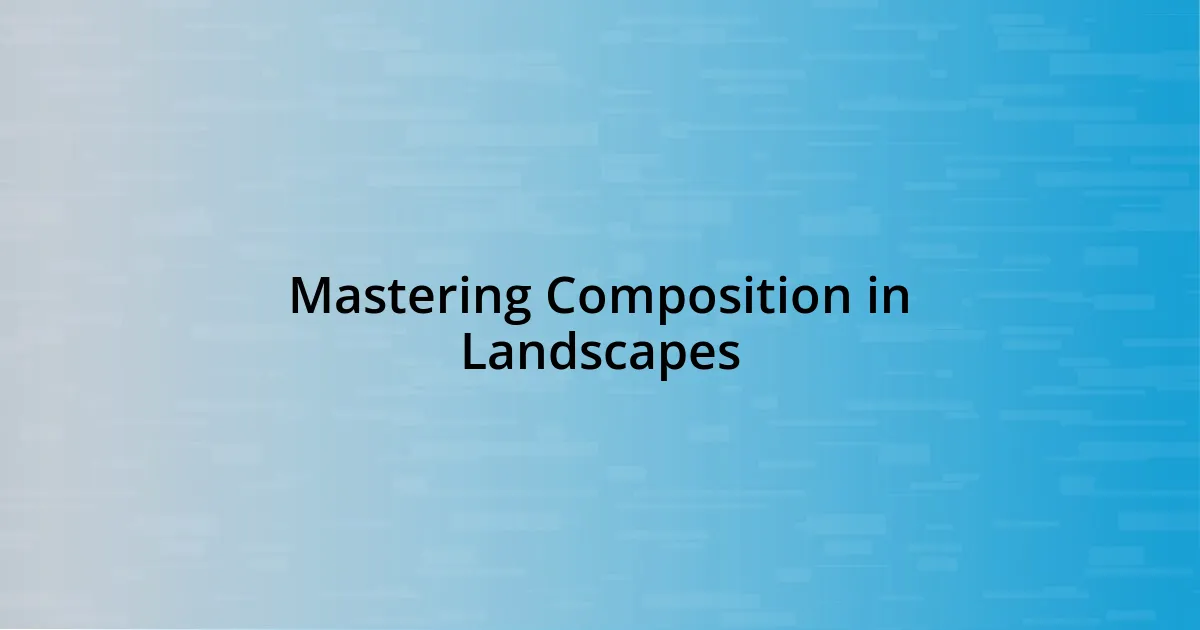
Mastering Composition in Landscapes
Mastering composition in landscape photography is like weaving a visual story. One of my most unforgettable shots happened during a hike in the Rockies, where I stood at an overlook. The layers of mountains stretched into the distance, and I decided to use leading lines to guide the viewer’s eye through the frame. This technique created depth and drew attention to the stunning layers of blue peaks bathed in soft morning light. It’s moments like these that remind me how important it is to consider every element in your frame.
Here are some key composition techniques to consider:
- Rule of Thirds: Divide your frame into thirds, both horizontally and vertically, to find balance.
- Leading Lines: Use natural lines, like rivers or paths, to direct the viewer’s eye through the image.
- Framing: Incorporate elements in the foreground to create a frame within the picture, adding depth.
- Symmetry: Pay attention to symmetry in nature, such as reflections in water, to create striking images.
- Layering: Use elements in the foreground, middle ground, and background to add dimension and intrigue.
- Point of View: Experiment with different heights and angles; a higher or lower perspective can entirely change the narrative of your shot.
Each of these techniques can dramatically transform how the viewer engages with your work. I remember adjusting my camera to a low angle during a sunset at the sea—capturing both the vibrant colors of the sky and the textured rocks in the foreground. The result was visually captivating, drawing viewers into the scene. Trust me, composition is not just about placing subjects; it’s about evoking emotions and telling stories through your lens.

Utilizing Natural Light Effectively
Utilizing natural light is one of the most powerful techniques in landscape photography. I often find myself waiting for that perfect moment when the golden hour light bathes the scenery in warm tones. Just last autumn, I was at a serene lake during sunrise, and the way the light danced on the water created a mesmerizing reflection of the trees. It was then that I realized the magic of early morning light—it not only brings warmth but also enhances details that might otherwise go unnoticed.
Cloudy days, surprisingly, can be a treasure trove for capturing stunning landscapes. I remember a day at a coastal cliff, where the diffuse light created by an overcast sky softened the harsh contrasts and brought out subtle colors in the landscape. Have you ever experimented with the dynamic range on such days? I encourage you to embrace these moments; the muted tones can evoke a sense of calm and depth that bright sunlight can’t always replicate.
Timing and patience are key when harnessing natural light. When I was shooting in a forest, I waited for the sun to filter through the leaves, creating a beautiful interplay of light and shadows. This experience made me appreciate how light can sculpt the environment, adding drama and texture to every shot. By understanding how light changes throughout the day, you can transform an ordinary scene into something truly breathtaking.
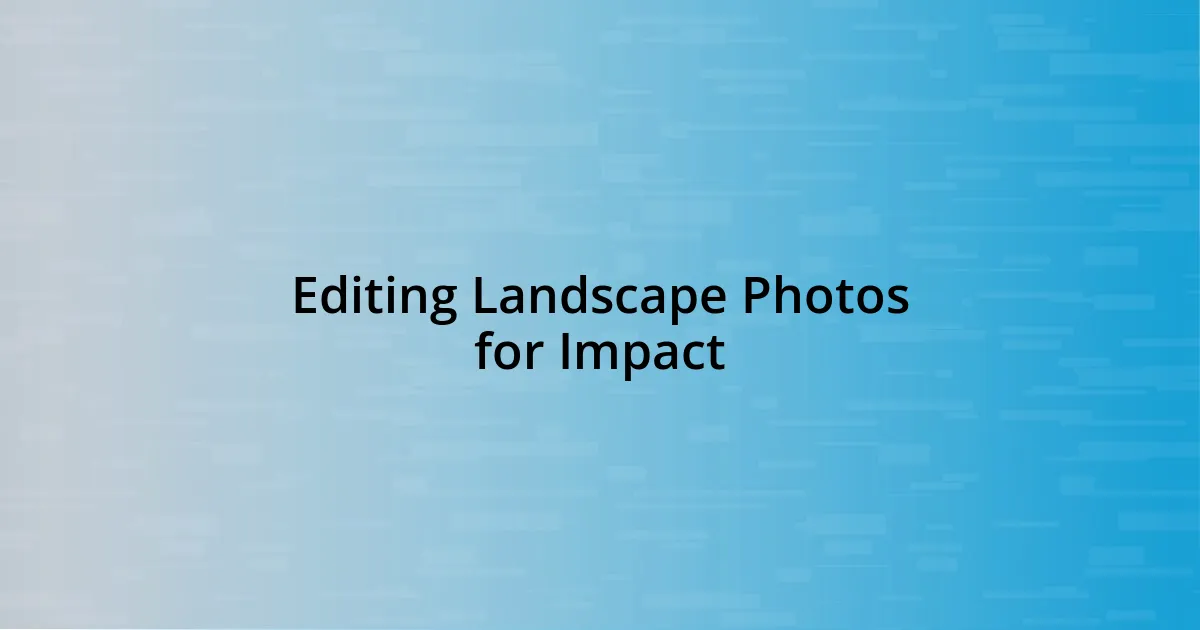
Editing Landscape Photos for Impact
Editing landscape photos can elevate them from good to stunning, adding that extra layer of impact. One of my favorite editing techniques is adjusting the contrast. I once took a shot of a mountain shrouded in mist, and when I boosted the contrast in post-processing, the textures of the rocks and the distant peaks suddenly popped. It made me realize just how much a little adjustment can drastically change the atmosphere—transforming a hazy morning scene into a majestic mountain vista.
Color correction is another essential step that I find invaluable. In a recent editing session, I had a photo of a vibrant sunset that seemed muted straight out of the camera. By enhancing the saturation and tweaking the white balance, the fiery oranges and reds became more pronounced, truly reflecting what I felt in that magical moment. Have you ever felt the urge to enhance colors just to capture the emotions of the moment? I think it’s crucial to find that balance, ensuring the final image remains authentic and doesn’t feel overly processed.
I also like to play with cropping to enhance my compositions further. Just the other day, I revisited a photo of a winding river that felt too cluttered in its original state. By cropping out some of the distractions, I was able to draw more attention to the natural flow of the river and the lush surrounding landscape. This not only improved the composition but also clarified the story I wanted to tell. Isn’t it fascinating how a simple crop can reshape an entire visual narrative? It’s important to remember that editing is not just about fixing flaws; it’s about enhancing the story you wish to share.

Sharing Your Landscape Photography Online
Sharing your landscape photography online can be an exhilarating experience, allowing you to connect with fellow enthusiasts. I remember the first time I posted my photos on social media; the instant feedback was both encouraging and nerve-wracking. Have you ever considered how a simple click can spark conversations about your creative process? Engaging with comments and seeing how others resonate with your work adds a layer of community that can be truly rewarding.
Choosing the right platform is crucial in showcasing your landscape shots effectively. For instance, I’ve found that Instagram’s visual-first approach works wonders for my photos, while Pinterest serves as a fantastic tool for inspiration and reaching a broader audience. Have you explored how different platforms can elevate the visibility of your work? Tailoring your sharing strategy lets you reach specific audiences who genuinely appreciate your artistic vision.
When sharing online, I’ve learned the importance of writing heartfelt captions that tell the story behind each shot. I still recall a moment in the mountains that left me breathless, and articulating that feeling unlocked a deeper connection with my audience. How often do you think about the emotions behind your images? Sharing the thoughts that prompted the capture can invite viewers into your world, transforming a mere photo into a shared memory that resonates on a personal level.
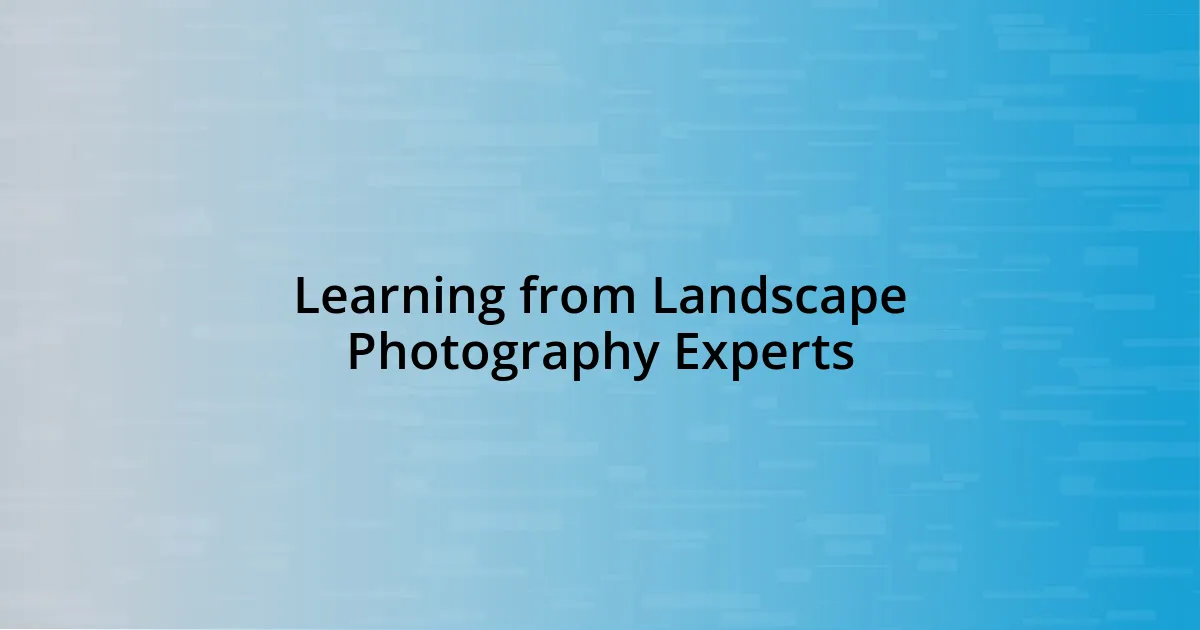
Learning from Landscape Photography Experts
Learning from landscape photography experts has been a game-changer in my journey. I recall attending a workshop led by a skilled photographer who emphasized the importance of light. He captured an incredible sunrise, and while watching him work, I realized that the subtle shifts in light could dramatically transform a scene. Have you ever noticed how the landscape changes mood as the sun rises? Understanding these nuances is essential for mastering your craft.
In addition to light, composition is crucial, and I often draw inspiration from experts who advocate the rule of thirds. I remember experimenting with this rule during a shoot at a local park. Instead of centering my subject, I placed it off to the side, creating a more dynamic image. It felt exhilarating to see the difference it made! How often do you explore unconventional framing in your shots? It’s these little lessons that open up a world of creativity.
Finally, I’ve discovered the value of feedback from seasoned photographers. I once shared a batch of my shots at a local meetup, and the critique I received was invaluable. While it stung to hear suggestions for improvement, those insights pushed me to rethink my approach. Are there moments in your own photography where you felt a need for outside perspective? Embracing constructive criticism can be a powerful tool for growth, turning your passion into art!






